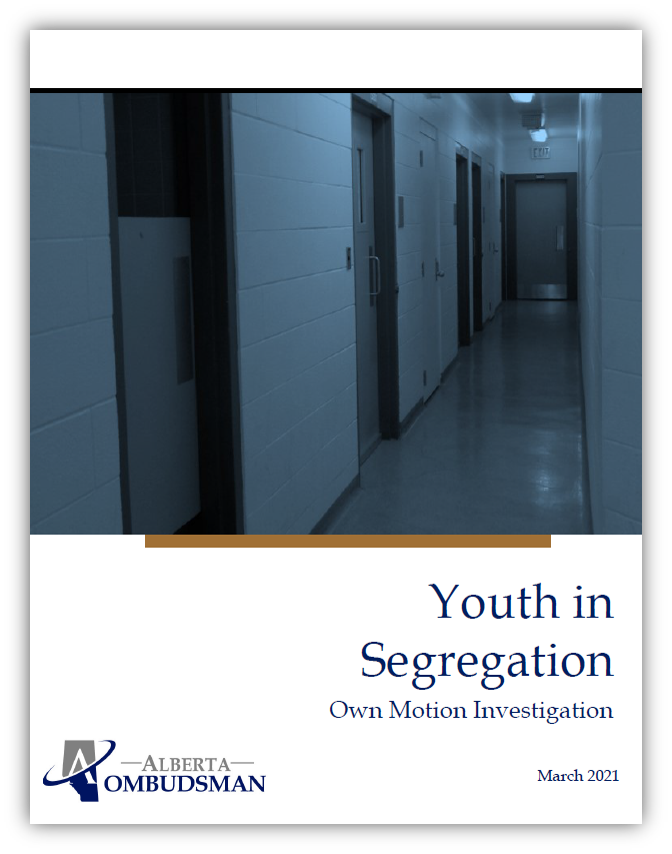EDMONTON – Ombudsman’s own motion investigation into the use of segregation in Alberta’s young offender centres leads to eight recommendations for improvement.
 In Alberta, youth accused or found guilty of breaking the law may be required to spend time in a provincial correctional facility. The Young Offender Branch, within the Ministry of Justice and Solicitor General, is responsible for overseeing incarcerated youth housed in the Edmonton Young Offender Centre and Calgary Young Offender Centre. Young people entering the system often carry the burden of past trauma, drug use, intellectual delays, family problems and mental health concerns. Young offender centres along with Alberta Education and Alberta Health Services offer programs, individual development and other supports so incarcerated youth may reintegrate into society.
In Alberta, youth accused or found guilty of breaking the law may be required to spend time in a provincial correctional facility. The Young Offender Branch, within the Ministry of Justice and Solicitor General, is responsible for overseeing incarcerated youth housed in the Edmonton Young Offender Centre and Calgary Young Offender Centre. Young people entering the system often carry the burden of past trauma, drug use, intellectual delays, family problems and mental health concerns. Young offender centres along with Alberta Education and Alberta Health Services offer programs, individual development and other supports so incarcerated youth may reintegrate into society.
Incarcerated individuals in Alberta have a right to contact the Alberta Ombudsman when they believe they are the subject of unfair treatment. Following a complaint from an incarcerated individual, the Alberta Ombudsman launched an own motion investigation into the use of segregation in Alberta’s two young offender centres.
The investigation looked into the centres’ adherence to legislation and policy in the enforcement of a young person’s placement in segregation. The adequacy of the appeal and review process related to that enforcement and the young person’s access to representation during an appeal and review process of their placement in segregation was the focus of the investigation.
The investigation identified four key findings and made eight recommendations for improvements to ensure correctional authorities address systemic issues arising from the use of segregation. Unlike most provinces in Canada, in Alberta, there is no legislative basis for the use of segregation in young offender centres. The use of segregation is currently based solely on policy developed by the Correctional Services Division and the centres themselves. Other key findings include inconsistent application of policy and evidence that the use of segregation is not well defined, tracked or documented.
“Young people incarcerated in Alberta’s young offender centres are at risk without strict boundaries that guide decisions about when and how to segregate an individual. We know prolonged periods of isolation or the use of segregation as a disciplinary measure is contrary to best known practices for an individual’s rehabilitation.”
“I believe it is in Alberta’s best interest to put to paper laws defining and governing the use of segregation in our young offender centres. In our investigation, we noted several examples of effective legislation here in Canada from which to learn.”
Marianne Ryan, Alberta Ombudsman
The Alberta Ombudsman’s office remains committed to working with the correctional authorities so recommendations to improve systemic issues are reasonable and ultimately lead to improved procedural fairness for young offenders in Alberta.








